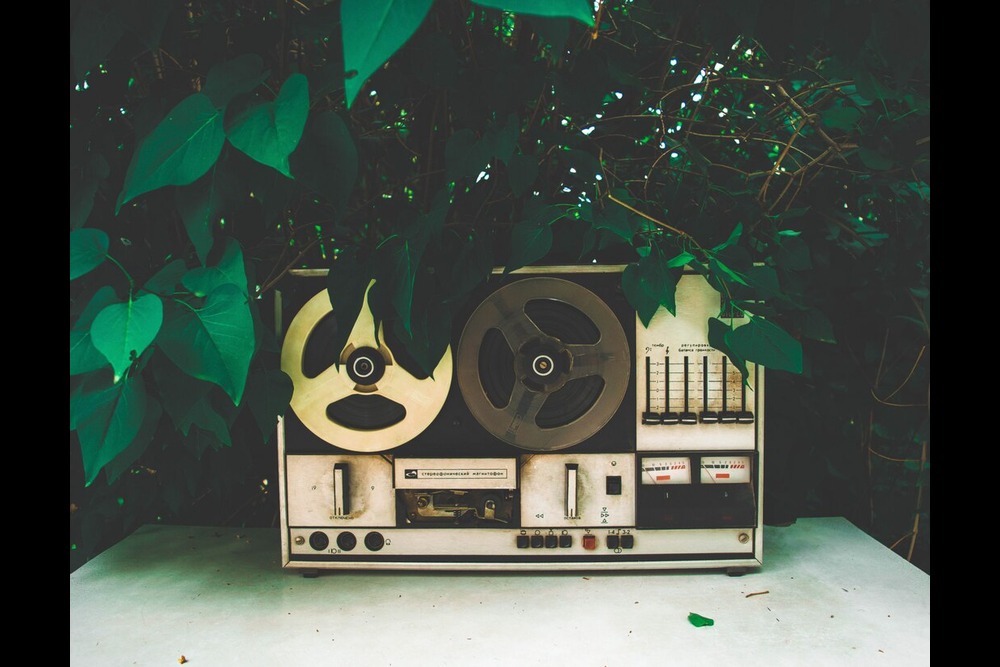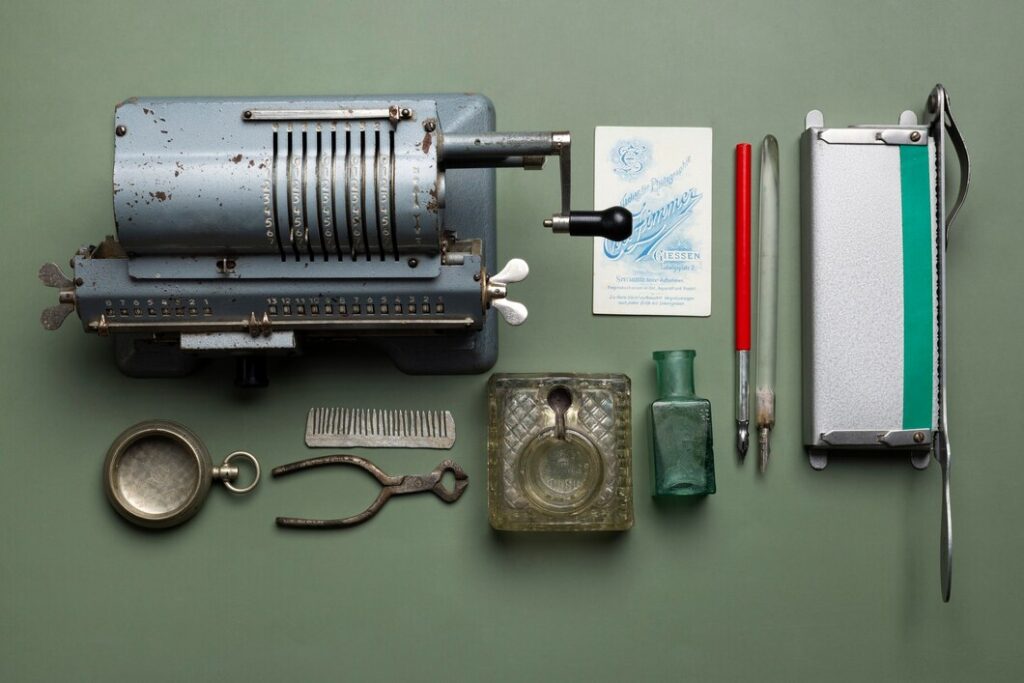
In an age defined by hyper-speed innovation, where every new device promises unprecedented power and sleek design, there’s a curious and increasingly prominent counter-current: a profound sense of nostalgia for the technology of yesteryear. We’re witnessing a widespread phenomenon of nostalgia for old tech, with old technology nostalgia permeating everything from fashion and music to gaming and consumer electronics. This isn’t just about a fleeting trend; it’s a deep-seated longing for simpler times, a reaction to digital overload, and an appreciation for tangible experiences that modern tech often abstracts away.
The Retro Tech Comeback: A Blend of Nostalgia and Identity
The retro tech comeback is more than just a passing fad; it’s a cultural statement, a search for authenticity, and a reflection of our collective yearning for what we perceive as a less complicated past. Understanding the multifaceted reasons retro technology is making a comeback reveals much about our relationship with innovation, progress, and personal history.
These vintage tech trends are not merely about aesthetics; they speak to deeper psychological and sociological shifts, driving a resurgence in nostalgic gadgets returning to prominence and creating a vibrant cultural nostalgia for old gadgets.
This yearning for the past manifests in countless ways: from the resurgence of vinyl records and cassette tapes, to the renewed interest in retro gaming consoles, flip phones, and even manual typewriters. It’s a complex interplay of psychological comfort, aesthetic appeal, a desire for digital minimalism, and a deeper appreciation for the design philosophies of a bygone era.

The Allure of Simplicity: Escaping Digital Overload
One of the most compelling reasons retro technology is making a comeback is the pervasive sense of digital overwhelm that defines modern life. Our smartphones are powerful supercomputers, but they are also relentless sources of notifications, information overload, and endless demands on our attention.
- A Retreat from Complexity: Old tech, by its very nature, is simpler. A disposable camera takes photos; a flip phone makes calls and texts; a Walkman plays music. There’s no multi-tasking, no app store, no constant updates, and crucially, no internet. This limited functionality becomes a feature, not a bug, offering a mental respite from the cognitive load of smart devices.
- Reduced Decision Fatigue: Modern tech bombards us with choices. Which app to use? Which notification to check? What to stream? Nostalgia for old tech offers a refreshing absence of these decisions. The limited options become liberating, allowing users to focus entirely on the task at hand. This is a direct response to the mental exhaustion induced by constant digital navigation.
- Digital Minimalism: The philosophy of digital minimalism advocates for conscious engagement with technology, using only tools that genuinely add value. Retro tech aligns perfectly with this. Using a dedicated music player for music, for instance, means you’re not constantly tempted by social media or email. This intentional paring down of digital distractions is a key driver behind vintage tech trends.
- A “Digital Detox” by Default: Many digital detox tips involve actively removing smart devices. With old tech, the detox is inherent. Using a simple feature phone for a weekend, for example, forces a disconnection from the internet, promoting presence and reducing social media anxiety.
The Tangible Experience: Connecting with the Physical World
Modern digital technology often abstracts away the physical interaction. Music is streamed, photos are stored in the cloud, and communication is via text. Old technology nostalgia brings back a much-missed tactile and tangible experience.
- Physicality of Media:
- Vinyl Records: The ritual of pulling a record from its sleeve, placing it on the turntable, and dropping the needle is a sensory experience. The warmth of analog sound, the large album art, and the deliberate act of listening contribute to a deeper appreciation for music than mere streaming. This is why the retro tech comeback for vinyl is so strong.
- Cassette Tapes: Rewinding with a pencil, the satisfying click of the player, and the imperfections of analog sound evoke a powerful sense of personal history.
- Disposable/Film Cameras: The delayed gratification of waiting for photos to be developed, the finite number of shots, and the unique aesthetic of film create a more deliberate and cherished photographic experience compared to the instant, endless digital photo roll.
- Vinyl Records: The ritual of pulling a record from its sleeve, placing it on the turntable, and dropping the needle is a sensory experience. The warmth of analog sound, the large album art, and the deliberate act of listening contribute to a deeper appreciation for music than mere streaming. This is why the retro tech comeback for vinyl is so strong.
- The Feel of the Device: Flip phones have a satisfying snap. Game controllers often had chunky buttons and distinct forms. The physicality of these devices, often robust and simple, contrasts sharply with the seamless, often fragile, glass slabs of today’s smartphones. This tangible interaction contributes to the charm of nostalgic gadgets returning.
- Repairability and Longevity: Older devices were often designed to be opened, repaired, and tinkered with. This sense of ownership and understanding of the mechanics contrasts with modern, sealed devices that often require professional repair or outright replacement. This aspect contributes to the impact of outdated technology discussions around sustainability.
Aesthetic Appeal and Design Philosophy: More Than Just Looks
Beyond functionality, the aesthetic and design philosophy of old technology nostalgia holds significant appeal.
- Distinctive Design Language: Older gadgets often had more unique and playful designs, less constrained by the pursuit of ultimate thinness or screen-to-bezel ratio. Think colorful iMacs, chunky Nintendo consoles, or the iconic brick-like mobile phones. These designs are now seen as charming and distinct.
- Retro-Futurism and Kitsch: The visual language of the 80s, 90s, and early 2000s evokes a sense of retro-futurism – a vision of the future from the past. This aesthetic is inherently cool and often associated with a vibrant cultural era. Vintage tech trends often lean into this kitschy but stylish appeal.
- Simplicity in Form: The lack of complex features meant a clearer, more intentional design. Buttons were clearly labeled, functions were straightforward, and the overall aesthetic was often less cluttered. This visual simplicity is a welcome change from the often-overwhelming interfaces of modern devices.
- The “Cool” Factor: For younger generations who didn’t grow up with these devices, nostalgic gadgets returning offer a fresh, unconventional, and inherently “cool” alternative to the ubiquitous smartphone. Using a flip phone can be a statement of individuality.
Psychological Comfort and Generational Memory
The most potent force behind nostalgia for old tech is often psychological. These devices are more than just electronics; they are time machines, linking us to cherished memories and a perceived simpler past.
- Childhood and Adolescence: For millennials and Gen X, old technology nostalgia is deeply intertwined with formative years. A Nintendo 64 isn’t just a console; it’s countless hours spent with friends, the joy of discovery, and a sense of carefree youth. A flip phone recalls a time before constant connectivity, when communication was more deliberate.
- Escapism and Comfort: In uncertain or stressful times, people often gravitate towards the familiar and comforting. Old tech represents a period that, in retrospect, seems less complicated, less anxious, and more stable. It’s a form of emotional escapism that provides a sense of security.
- A Slower Pace of Life: The limited capabilities of retro tech inherently force a slower pace. Waiting for a game to load, physically winding a tape, or anticipating developed photos encourages patience and a more deliberate engagement, contrasting with the instant gratification demanded by modern tech. This slower pace is a significant reason why retro technology is making a comeback.
- Shared Cultural Reference Points: These gadgets are often icons of specific cultural moments. The Walkman defined personal music consumption. The original iPod revolutionized it. Discussing these devices sparks shared memories and conversations, fostering a sense of community and collective cultural nostalgia for old gadgets.
Sustainability and Conscious Consumption
While not the primary driver for everyone, a growing awareness of environmental issues contributes to the appeal of vintage tech trends.
- Rebellion Against Planned Obsolescence: The fast fashion of electronics, where devices are quickly deemed obsolete, contributes to the massive problem of e-waste. Choosing to use or repair older tech, or opting for durable, simpler devices, can be a subtle act of rebellion against this unsustainable cycle. This links to discussions about the environmental impact of e-waste disposal.
- Durability and Repairability: As mentioned, many older gadgets were built to last and were often more easily repairable. This contrasts with the often sealed, difficult-to-fix designs of modern devices. For environmentally conscious consumers, this inherent longevity is attractive.
- Reducing E-Waste: By reusing, repairing, or appreciating existing older devices, consumers are indirectly contributing to electronic waste management by extending the life cycle of products, reducing the demand for new manufacturing, and lessening the impact of outdated technology.
The Market Responds: Nostalgic Gadgets Returning to Production
The strong demand for nostalgia for old tech has not gone unnoticed by manufacturers and entrepreneurs.
- Reissues and “Retro” Versions: Companies like Nokia have successfully re-released updated versions of their classic flip phones (e.g., the Nokia 3310 and 8110), blending old aesthetics with modern (but limited) functionality. Console manufacturers like Nintendo have released “Classic” mini versions of their NES and SNES consoles, packed with pre-loaded games.
- Vinyl Pressing Plants: The demand for vinyl has exploded, leading to a resurgence in vinyl pressing plants and a massive increase in album sales in this format.
- Third-Party Innovators: Independent companies are developing new products that tap into vintage tech trends, such as high-quality portable cassette players, modern film cameras, or accessories that give smartphones a retro feel (e.g., external retro-style camera lenses).
- Gaming Emulation and Restoration: The retro gaming community thrives on emulating old systems, restoring vintage consoles, and even developing new games for old platforms. This passionate community fuels the retro tech comeback.
- Specialty Stores and Communities: Online forums, dedicated subreddits, and physical stores specializing in vintage electronics cater to enthusiasts looking to buy, sell, and repair old gadgets.
These market responses confirm that the cultural nostalgia for old gadgets is a significant economic force, not just a fleeting sentiment.
Conclusion: A Balanced Future
The pervasive nostalgia for old tech is more than just a sentimental glance backward; it’s a multi-layered phenomenon driven by our desire for simplicity, tangible experiences, unique aesthetics, psychological comfort, and even a burgeoning sense of sustainability. In a world of increasing complexity and digital saturation, old technology nostalgia offers a refreshing counterpoint, a reminder of what we might be losing in our relentless pursuit of the new.
The retro tech comeback isn’t about abandoning modern technology entirely. Instead, it represents a search for balance—a recognition that while innovation propels us forward, there’s profound value in the past. It’s about consciously choosing when and how we engage with technology, appreciating the unique benefits of both the cutting-edge and the classic.
As vintage tech trends continue to influence design and consumption, they encourage us to ask critical questions about the true cost of progress and the enduring appeal of the simple, the tangible, and the genuinely human experience that these nostalgic gadgets returning remind us of. This powerful cultural nostalgia for old gadgets serves as a vital anchor in our rapidly evolving digital world.




